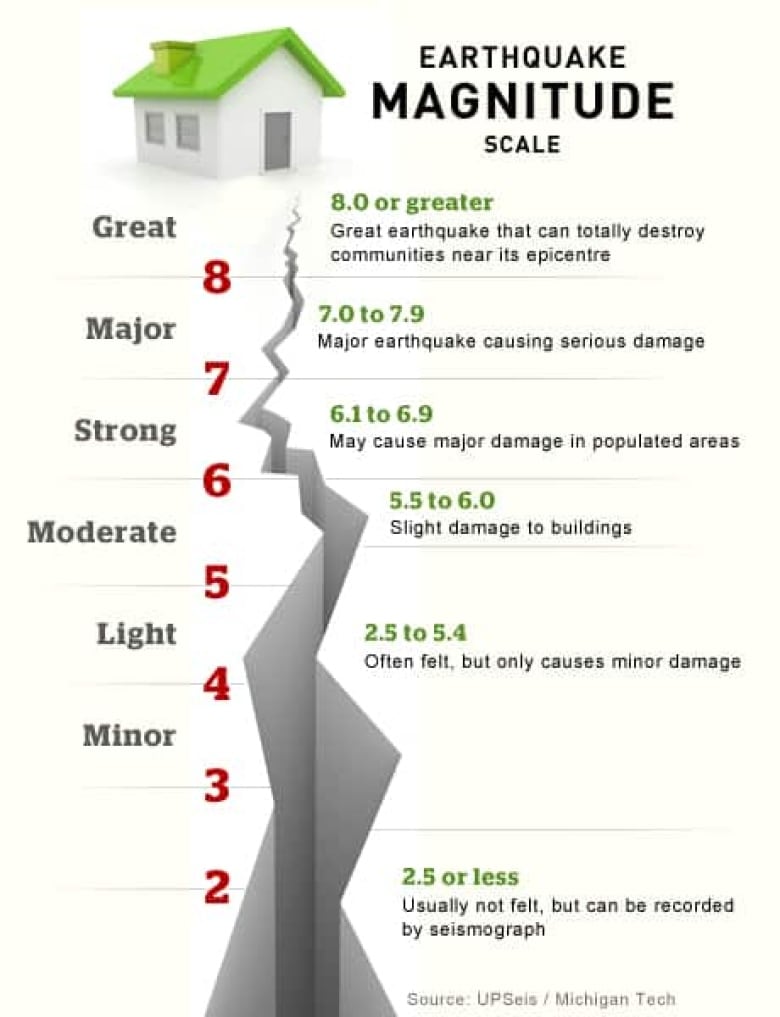Richter 'magnitude' scale explained
Quake strength now referred to as 'magnitude' as Richter's name retired
The first practical scale for measuring earthquakes was developed by geologist Charles Richter at the California Institute of Technology in the 1930s, and the scale that most scientists use today still bears his name.
(Actually, seismologists use several different, but related, scales. But the Richter scale, denoted by a number called the "magnitude," is the most common. This quantity, which can be read off a seismograph, reflects the amount by which the earth's crust shifts.)
The Richter scale has no lower limit and no maximum. It's a "logarithmic" scale, which means that each one-point increase on the scale represents a 10-fold increase in the magnitude of the quake.

The energy released by an earthquake increases at an even steeper rate, going up by a factor of 32 for each one-point increase in magnitude.
Therefore, a quake with magnitude between 2 and 3 is the lowest normally perceptible to humans. A magnitude 5 quake is considered moderate.
Worldwide, there are about 1,500 earthquakes of magnitude 5 or higher every year.
An earthquake of magnitude 6 or higher is considered major.
The largest earthquakes in history have been of about magnitude 9.
Major earthquakes release far more energy than any man-made explosion. The 1906 San Francisco earthquake, with a magnitude of 8.3, was approximately one million times as powerful as the atomic bomb dropped on Hiroshima.












_(720p).jpg)


 OFFICIAL HD MUSIC VIDEO.jpg)
.jpg)



























































































